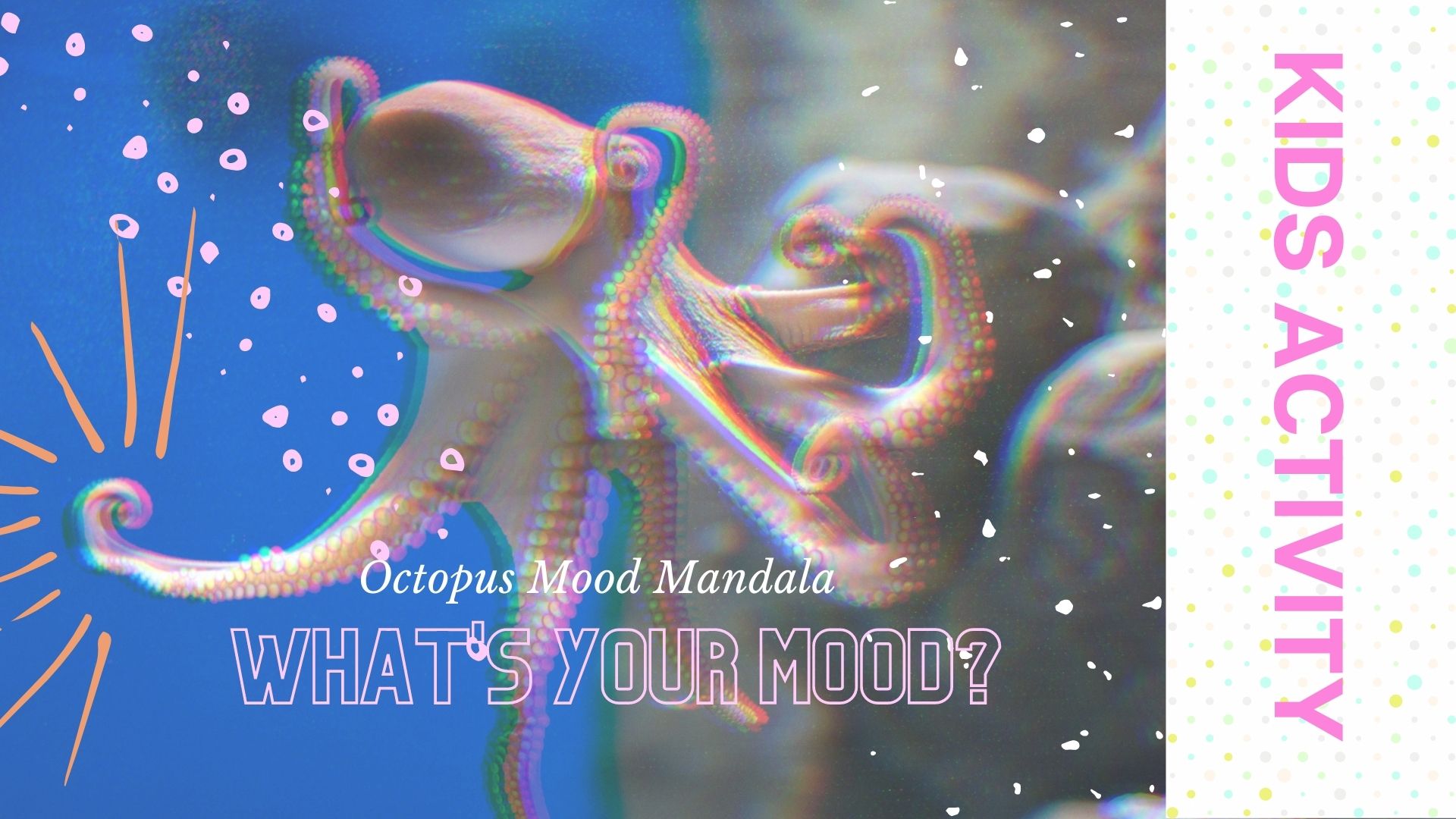Kids Activity – What’s Your Mood?
Imagine if you could change the colour of your skin to match your mood, communicate in a language of light, and camouflage yourself into the chair you are sitting in when you want to become totally invisible?
Well, that exactly what an Octopus can do!.
From invisibility cloaks to complex problem-solving abilities, glowing colour-changing skin, shape-shifting bodies and smoky doppelgängers; the octopus, with their agile intelligence, alien bodies, and visual communication systems are spectacularly peculiar and brilliantly adapted to their liquid world.
Kids Activity – What’s Your Mood?
Imagine if you could change the colour of your skin to match your mood, communicate in a language of light, and camouflage yourself into the chair you are sitting in when you want to become totally invisible?
Well, that exactly what an Octopus can do!.
From invisibility cloaks to complex problem-solving abilities, glowing colour-changing skin, shape-shifting bodies and smoky doppelgängers; the octopus, with their agile intelligence, alien bodies, and visual communication systems are spectacularly peculiar and brilliantly adapted to their liquid world.
Octopuses have feelings
From invisibility cloaks to complex problem-solving abilities, glowing colour-changing skin, shape-shifting bodies and smoky doppelgängers; the octopus, with their agile intelligence, alien bodies, and visual communication systems are spectacularly peculiar and brilliantly adapted to their liquid world.
Boneless, multi-talented, hypersensitive and smarter than a domesticated dog, the octopus is the closest we have come to alien intelligence. Octopuses can feel and think through their whole body, they have complex neurological systems, nine brains and the ability to edit their genetics.
Sensitive, inquisitive, shy and playful the Octopus-like it’s cephalopod relatives can change the colour, texture and pattern of its skin to camouflage and to express feelings. When an Octopus is white it is relaxed, red means stressed and blue and other marine colours are in play with their environment.
What colour are you?

——-
PUBLISHER’S DISCLAIMER: The publisher of this blog post (Digital Schools PTY LTD) works in partnership with the school as a 3rd party provider to help build and maintain the school website. Digital Schools sources a range of experts who provide products and/or services to educational institutions and we work with them to produce and publish topical information in the form of blog posts that we think may be relevant, interesting or topical to families within the community. The views, opinions and content listed in this blog post are that of the guest contributor and/or publisher (Digital Schools). It should be noted that whilst the publisher and guest contributors are acting with the best intentions and in the best interests of the school and their community to provide helpful or interesting information, sometimes the content may not necessarily reflect the views of the school.
The information in this blog post is not meant to be used, nor should it be used, to diagnose or treat any medical condition. For diagnosis or treatment of any medical problem, consult your own physician. The school and the publisher of this blog post are not responsible for any person reading or following the information in this article who may experience adverse effects.
Any references to external websites or sources are provided for informational purposes only and do not constitute endorsement by the school or publisher in any way and the publisher and/or school cannot guarantee accuracy of information listed.
If you have feedback on any content on this platform, you can submit it to the publisher using the feedback link provided at the bottom of this page.





